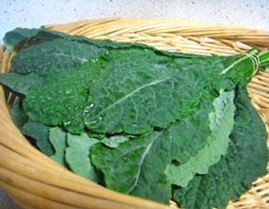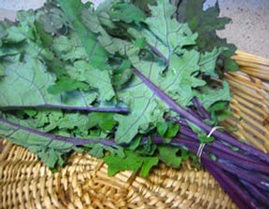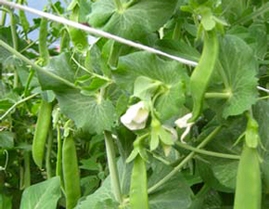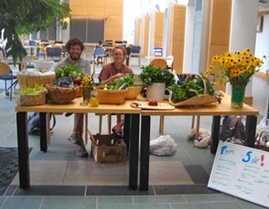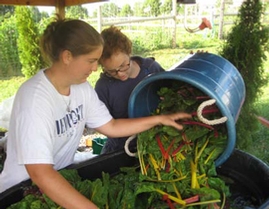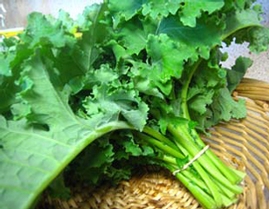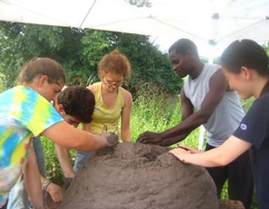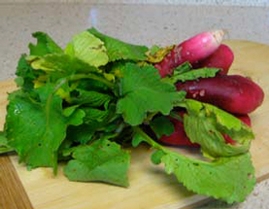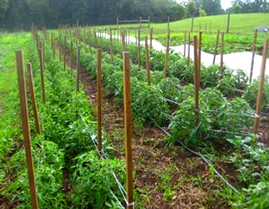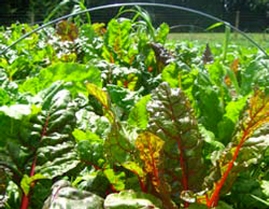Tool Use
- Cultivators
- Rototiller
- Hoop House Use
- Compost
- Volunteer Management
- Calendar
Volunteer Management
Leaders
At the end of the summer, begin asking students who have been involved with the farm in the past to be work group leaders. There should ideally be between five and ten leaders. These should be students who are knowledgeable, enthusiastic, and responsible, but remember, no one should feel pressured to lead. These leaders will share the responsibility of leading work groups with the farm managers once the school year starts. Find times to have work groups that are convenient for these leaders, and to avoid burn-out no leader should have more than two shifts, although of course they can come more often than that! When they all arrive on campus, have a training session so they are ready to lead as soon as possible. It is important to train the leaders both in how to do all of the tasks necessary at the farm and how to effectively lead volunteers. In the spring, leaders from the fall and new leaders identified from fall volunteers should re-train with a specific focus on greenhouse work and techniques.
Workgroups
The Plan
Workgroups, and the volunteers who come to them, are the backbone of the farm during the school year and so it is wise to maximize participation and utility of these groups. For participation, three factors are important: advertising, consistency, and volunteer fulfillment. Advertising should be multi-faceted, organized and clear (Part of a Strategic Communications Plan developed each year). Consistency allows both volunteers and leaders to plan ahead and know that when they go out to the farm, others will be there. When volunteers come out to work, they should both have fun and feel that they are making a tangible contribution to the farm. To get real work done there need to be clear goals and a plan for the day. Leaders should know in advance what they will seek to accomplish and how to do so.
Documentation of Workgroups
This area in particular has often been neglected, but is important for management and particularly for obtaining funding of any sort in the future. Proper documentation will allow reporting of exact figures on total volunteers and volunteer-hours per season. Using the volunteer log (included in appendix), track times, number of volunteers, and what was accomplished at the workgroups. Tracking times will also allow better planning in future seasons by providing information about which days had high turnout and how long different tasks took.
Major Work-days
Large groups of people occasionally come out to the farm for organized volunteer hours (such as Hamilton Serves or a sports team doing community service hours), and a lot can be accomplished with this number of people. The tasks and division of both labor and leadership on these days should be planned in advance. These are days when large scale or more tedious tasks can be accomplished with ease. Know in advance how many volunteers will be arriving and the estimated skill and strength level of the volunteers (e.g. do not plan on having middle school kids using the tiller). Know the strengths and abilities of the leaders too. Some leaders can effectively manage 20 volunteers while others prefer a more intricate task with only four or five volunteers. Some jobs will be limiting too. Always have backup plans for inclement weather, fewer volunteers, more volunteers, etc. Organizing a few all-day, all-campus workdays is also a fun and efficient way to involve a lot of the campus community and get a lot of work done.
Workgroups: The Day Of
Workgroups can be a great time to share a common task, work the soil and enjoy the company of other dedicated individuals. This does not just happen by chance though; it is the conscious work of the workgroup leaders who make it so. The first priority of leaders is to make volunteers feel welcome, appreciated, and that they are making a meaningful contribution. This is how students can first begin to feel ownership of the farm, not that they are coming out to help on someone else’s project. Work on the farm should also be fun! True there are some days when all that needs to be done is weeding, but the attitude and outlook of the group can still be fun. Knowing the names of volunteers and ensuring they know each other should be a given each day. Always making the assumption that two people have not met creates smooth communication from the get-go. As was addressed above, always have a plan; and always share that with the volunteers. Plan not only what is going to be accomplished, but also how the task will be broken up and how people will be divided as they arrive. (Know what gets prioritized and what tasks need few or many volunteers). Be aware of the work styles of volunteers and assign tasks accordingly. Do not forget to include wrap-up time in the plan, and for larger work-days a debrief and summary of what was accomplished.
Tips
- Always give a general introduction to the farm at the beginning of workgroups including what the farm strives to accomplish, where the food goes, and basic knowledge such as following the paths.
- Be sure to check in with volunteers as they are working and not leave them isolated physically or socially from the group. Make sure that if there is a particularly repetitive or menial task that volunteers switch out occasionally. (Same if there is something super awesome.)
- Providing the big picture and not just the specific task at hand gives a sense of purpose to the work and lets volunteers see how they are an important part of the entire operation. For larger groups when the work was compartmentalized, it is a good idea to debrief with the entire group at the end and have each sub-group share what they accomplished.
Communication
Communication between managers, leaders, and the farm supervisor is critical, and should consist of at minimum a weekly meeting. At the weekly meeting, a plan for the coming week will be outlined and goals set for the workgroups. Everyone will also be able to bring up concerns and anything they have noticed at their workgroups over the past week. While the managers may take the lead at these meetings, all leaders should feel empowered to provide direction to the work. All leaders should be well informed about what is growing and the big picture plan for the space. Having this knowledge will enable them to make decisions on the spot without having to consult a manager.

